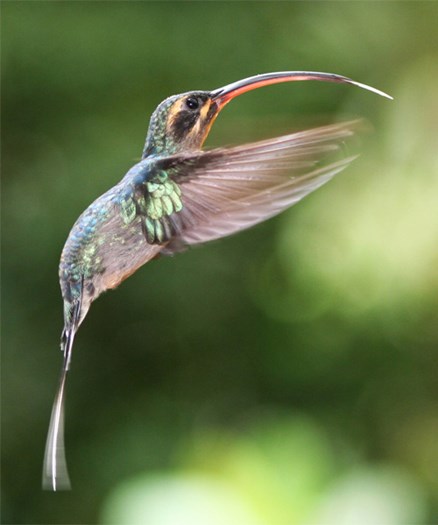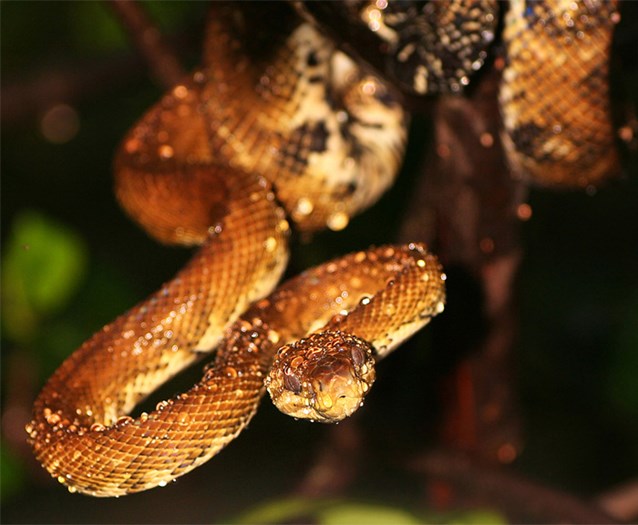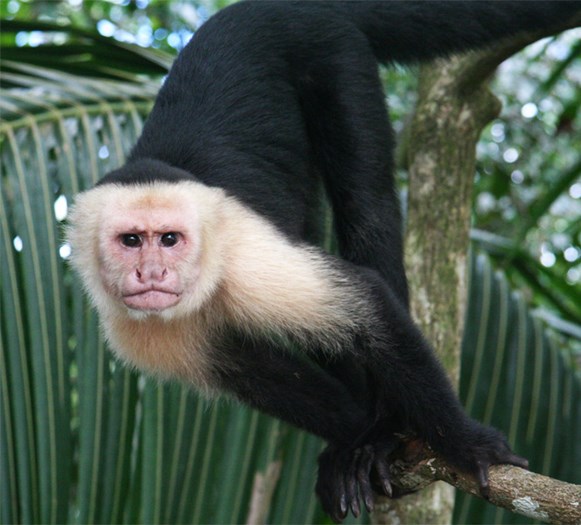MANUAL ANTONIO, COSTA RICA - It took 4½ hours on the worst roads we’ve ever encountered to reach Costa Rica’s greatest ecological treasures: Mount Arenal, the Monteverde Cloud Forest and the reserves around Manuel Antonio.
In parts, the highway resembles a dry riverbed; the rest is a mix of boulders, potholes, ruts and crevasses large enough to swallow tires.
The route’s not unsafe, as many blogs and forums on the web make it out to be, but it is very slow, very bumpy and very, very dusty — or muddy, depending on the season.
We pass other cars infrequently; if we were to break down, it could be hours before help arrived.
The challenging drive is part of our 10-day adventure to experience one of the world’s great ecological areas, home to more than 50,000 species of animals, insects and plants.
While tiny Costa Rica occupies just 0.1 per cent of the Earth’s landmass, it boasts 5 per cent of the planet’s biodiversity. It’s ecotourism heaven, attracting a varied crowd of aspiring biologists to gaga-eyed photographers to bucket-list baby boomers.
We’re here in November, between the rainy and dry seasons, to avoid the crowds and the high-season prices on flights, accommodation and food.
Our starting point is Mount Arenal, the world’s second-largest active volcano, near the town of La Fortuna. Our base at the Arenal is less than a kilometre from the volcano (after a 4x4 ride across more rocky roads).
The lodging is perfect and the view is spectacular. We’re up around midnight and again at 4 a.m. to view rivers of red-hot lava flowing down the mountainside.
On hikes around the lodge we sight coati mundi, peccaries and ocelots, which are nocturnal and difficult to spot. The dense tropical forest is populated with rare birds.



Left: Hummingbirds are awesome. Middle: Watch where you step. Right: Rainforest is teaming with wildlife.
Later, as we take a guided hike through Hanging Bridges Park, we see howler monkeys, toucans, and even a poisonous Blue Jeans Dart frog. I capture everything with my camera, except the elusive peccaries, which are just too quick.
Our next stop is Monteverde, a high-altitude rain forest and one of the most popular eco-spots in Costa Rica.
The roads en route are rough, left that way to discourage mass tourism, local people tell us.
Monteverde is an amazing example of a “cloud forest”; a rain forest so high up that it’s almost always shrouded in mist. But on the day we arrive, it’s clear and we see several examples of Costa Rica’s national bird, the quetzal, which is actually sort of dull-looking, resembling a clay-coloured robin.
We’re more impressed by the hummingbirds, of which there are more than 400 types.
On the “riverbed road” leaving Monteverde, we come across men selling tickets to watch giant crocodiles swim in the Rio Tarcoles.
We decline, pressing on to our hotel in Manuel Antonio state park, which is surrounded on three sides by rain forest and where the view of the Pacific Ocean is splendid.
The town was built many years ago specifically to service the park, which opened in 1972. The park is stunning and inhabited by bats, spiders, monkeys, sloths and reptiles and birds galore. We’re told that during the high season, the wait to get into the eco-wonderland can last up to an hour.
But wildlife still outnumbers tourists and the government is working to balance commercial development with environmental responsibility.
For the time being, Costa Rica remains largely unspoiled — it’s one of the world’s most beautiful countries; its plant and animal life is precious; and the people are genuine and hospitable. There’s nothing here that needs improving — except maybe the roads.
About the Author

From tracking and naming a female Humpback Whale in Moorea, near Tahiti; in a hot air balloon adventure over the Napa wine valley, to visiting a native community two hours by canoe into the depths of the Ecuadorian Amazon, Mark has brought many adventure travel stories and images to readers across the country. A freelance contributor to TraveLife magazine, Mark also is a regular contributor of travel features to ExtraOrdinary Health Canada Magazine; and has been published in the Toronto Star, the National Post, and Air Canada’s EnRoute magazine, and in Photographer’s Forum: Best of Photography. Mark studied photography at Toronto’s Ryerson University. Mark’s been fortunate enough to travel to places many people dream of in addition to those mentioned previously; The Galapagos islands, Bora Bora, Taha’a, Raiatea, Costa Rica, extensively through the Caribbean, Puerto Rico, Mexico, Florida, California, Alberta, B.C., England and Scotland. Favorite spot? That’s a hard one – there have been so many but at the end of the day it’s no contest: Bucket list Bora Bora.